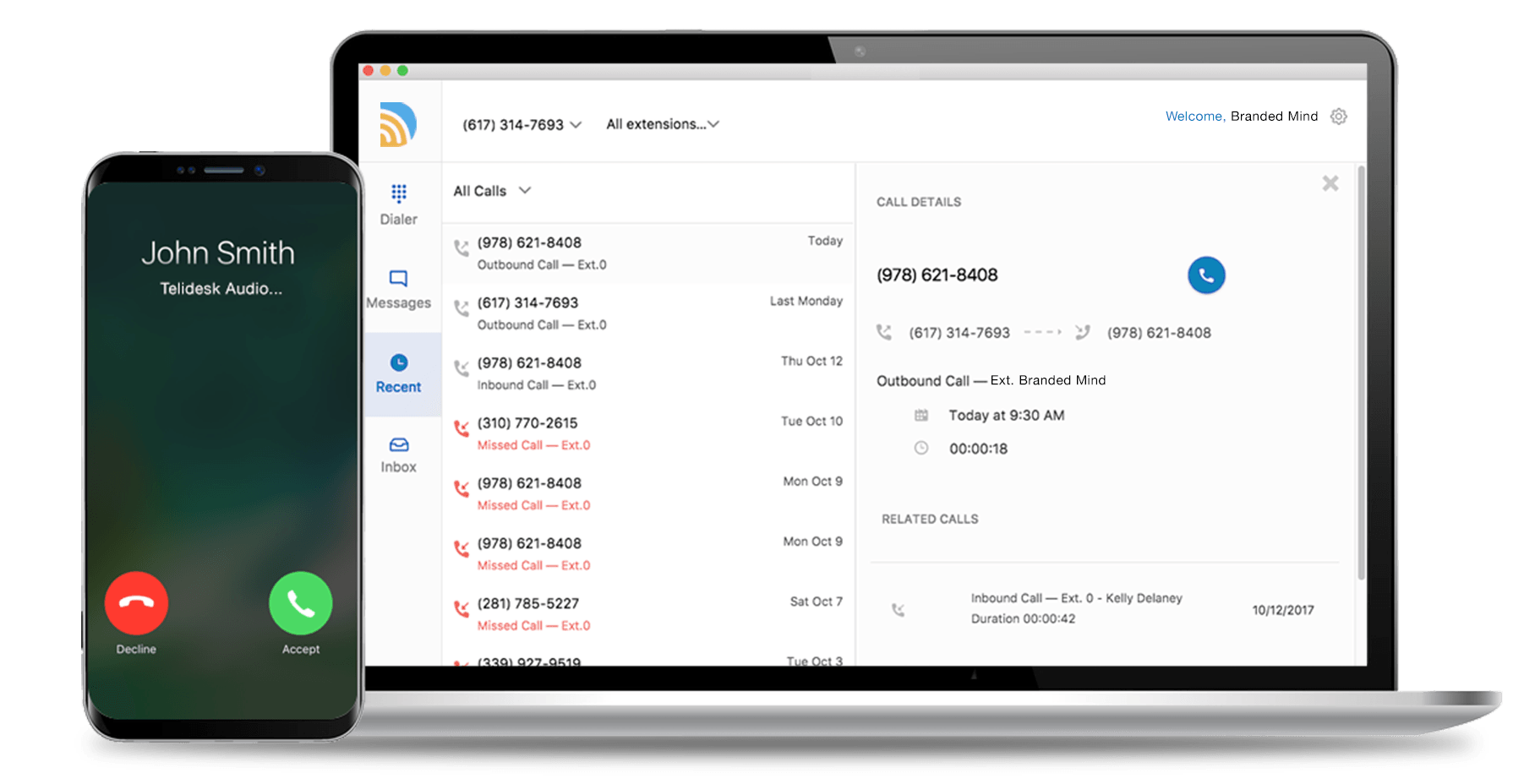TeliDesk allows business to use any VoIP technologies to communicate, based on their preference, whether it be soft phone, IP phones or POTS (traditional analog lines.)
The terms IP phone, softphone, WebRTC, and analog adapter refer to different technologies used for making phone calls, each with its own characteristics and features. Here's a brief overview of the differences:
- IP Phone (Internet Protocol Phone):
- Description: An IP phone, also known as a VoIP (Voice over Internet Protocol) phone, uses the Internet to transmit voice data instead of traditional telephone lines. It can be a physical device that looks like a traditional telephone or a software application.
- Connection: Typically connected to the internet via Ethernet or Wi-Fi.
- Features: Can have advanced features like video calling, touchscreen interfaces, and integration with other IP-based communication systems.
- Softphone:
- Description: A softphone is a software-based application that allows users to make voice and video calls over the Internet using a computer, smartphone, or tablet. It often mimics the interface of a traditional phone.
- Connection: Relies on an internet connection, and the device running the software needs a microphone and speakers or a headset.
- Features: Offers flexibility, portability, and can include features like call recording, instant messaging, and video conferencing.
- WebRTC (Web Real-Time Communication):
- Description: WebRTC is a free, open-source project that enables real-time communication over web browsers using simple application programming interfaces (APIs). It allows for audio and video communication directly within web pages.
- Connection: Utilizes web browsers as the platform for communication without requiring additional plugins or software.
- Features: Enables real-time communication between browsers, facilitating applications like video conferencing, screen sharing, and peer-to-peer communication.
- Analog Adapter:
- Description: An analog adapter, often referred to as an ATA (Analog Telephone Adapter), is a device that allows traditional analog telephones to connect to a VoIP network. It converts analog signals to digital signals for transmission over the internet.
- Connection: Connects to the internet and the analog telephone, typically using standard telephone jacks.
- Features: Enables the use of existing analog phones with VoIP services, providing a bridge between older telephony technology and modern IP-based communication.
Key Differences:
- Physical vs. Software: IP phones and analog adapters are physical devices, while softphones are software applications. WebRTC is a framework for real-time communication directly in web browsers.
- Device and Connection: IP phones and analog adapters often involve hardware devices connected to the internet. Softphones and WebRTC rely on software applications running on computers or mobile devices.
- Portability: Softphones and WebRTC are more portable and flexible since they can run on various devices, while IP phones and analog adapters are typically stationary.
- Compatibility: IP phones and analog adapters are compatible with traditional telephones. Softphones and WebRTC are more versatile and adaptable to various devices and platforms.
Choosing the right technology depends on factors like the specific use case, preferences, and existing infrastructure. Businesses may use a combination of these technologies based on their communication needs.





